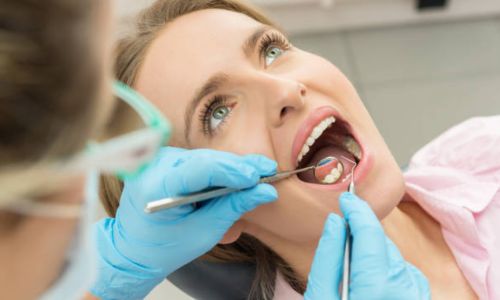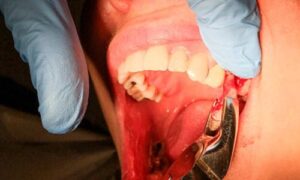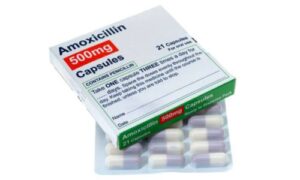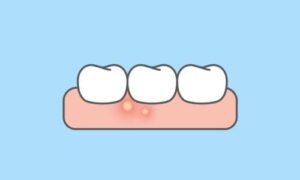Getting a dental crown is a common procedure in modern dentistry. Crowns restore a tooth’s shape, strength, and function after damage. Whether the damage is due to decay, a large filling, or a fracture, a crown can help protect and strengthen the tooth. This article will walk you through the detailed steps of how to prepare a tooth for a crown, ensuring you understand the entire process.
Understanding Dental Crowns
Dental crowns are caps placed over a tooth to restore shape, size, and appearance. They can be made from various materials, including metal, porcelain, resin, or ceramic. Crowns are used for multiple reasons, such as to protect a weak tooth, restore a broken tooth, cover a dental implant, or improve the appearance of a discolored or misshapen tooth.
Types of Dental Crowns
There are different types of dental crowns, each with its benefits. Metal crowns, made from gold, platinum, or base-metal alloys, are known for their durability and strength. Porcelain-fused-to-metal crowns provide a more natural tooth color and are suitable for front and back teeth. All ceramic or all-porcelain crowns offer the best natural color match and are ideal for people with metal allergies. Resin crowns are less expensive but wear down over time and are more prone to fractures.
Initial Consultation for Prepare a Tooth for a Crown
The first step in preparing a tooth for a crown is an initial consultation with your dentist. During this visit, your dentist will examine the tooth and determine if a crown is the best option for treatment. They will take X-rays to assess the roots of the tooth and the surrounding bone. If the tooth has extensive decay or there is a risk of infection, a root canal treatment may be necessary before the crown is placed.
Treatment Plan: Prepare a Tooth for a Crown
Your dentist will develop a treatment plan based on the examination and X-rays. This plan will outline the steps to prepare your tooth for a crown. It will also include details about the type of crown used and the procedure’s timeline. Your dentist will discuss the treatment plan with you and address any questions or concerns you may have.
Prepare a Tooth for a Crown
Once the treatment plan is in place, the next step is to prepare the tooth for the crown. This involves several key steps to ensure the tooth is properly shaped and ready for the crown to be placed.
Anesthesia to Prepare a Tooth for a Crown
The first step in the preparation process is administering local anesthesia to numb the tooth and surrounding area. This ensures you do not feel any pain during the procedure. Your dentist will use a needle to inject the anesthesia into the gums near the tooth that will receive the crown.
Removing Decay and Old Fillings
After the anesthesia takes effect, your dentist will remove any decay from the tooth. If the tooth has an old filling, it will also be removed. This step is crucial to ensure the tooth is free of decay or infection before placing the crown.
Reshaping the Tooth When Prepare a Tooth for a Crown
Next, the dentist will reshape the tooth to make room for the crown. They will trim the tooth on the top and sides using a dental drill. The amount of teeth removed depends on the type of crown being used. For example, metal crowns require less tooth removal than porcelain or ceramic crowns. The goal is to create a tooth shape that allows the crown to fit snugly and securely.
Building Up the Tooth
Sometimes, the tooth must be built up before the crown can be placed. This is often necessary if a large portion of the tooth is missing due to decay or damage. Your dentist will use a filling material to build up the tooth’s core, providing a solid foundation for the crown.
Taking Impressions to Prepare a Tooth for a Crown
After the tooth is properly shaped, impressions are taken. These impressions create a custom crown that fits perfectly over the prepared tooth.
Digital Impressions
Many modern dental offices use digital impression technology to create a 3D image of the tooth. This process involves using a small wand to scan the tooth and surrounding area. The digital images are then sent to a dental lab, where the crown is designed and manufactured. Digital impressions are more accurate and comfortable than traditional impressions.
Traditional Impressions
In some cases, traditional impressions may be used. This involves placing a putty-like material in a tray and pressing it against the tooth. The material sets and creates a mold of the tooth. The mold is then sent to a dental lab, where the crown is made. While traditional impressions are effective, they can be uncomfortable for some patients.
The global dental crowns and bridges market size was valued at USD 2.85 billion in 2018 and is projected to reach USD 4.56 billion by 2026. Source.
Temporary Crown Placement
While waiting for the permanent crown, your dentist will place a temporary crown over the prepared tooth. This temporary crown protects the tooth and maintains its function until the permanent crown is ready.
Creating the Temporary Crown
The temporary crown is usually made from acrylic or composite resin. Your dentist will shape the material to fit over the prepared tooth. It is then cemented in place with temporary dental cement. The temporary crown is not as strong as the permanent crown, so avoiding chewing hard or sticky foods that could dislodge it is important.
Caring for the Temporary Crown
While you have a temporary crown, it is important to take care of it to avoid any issues. Avoid chewing on the side of the mouth with the temporary crown, and practice good oral hygiene by brushing and flossing gently around the crown. If the temporary crown becomes loose or falls off, contact your dentist immediately to have it re-cemented.
Permanent Crown Placement
Once the permanent crown is ready, you will return to the dentist for the final placement. This step involves removing the temporary crown and fitting the permanent crown over the prepared tooth.
Removing the Temporary Crown
The first step is to remove the temporary crown. Your dentist will use special tools to pry it off carefully. Any remaining temporary cement will be cleaned off the tooth to ensure a proper fit for the permanent crown.
Fitting the Permanent Crown
Next, the dentist will check the fit and color of the permanent crown. The crown should fit snugly over the tooth without any gaps. Your dentist will make any necessary adjustments to the crown to ensure a comfortable fit. Once the fit is perfect, the crown will be cemented using a strong dental adhesive.
Final Adjustments
After the crown is cemented, your dentist will make final adjustments to ensure your bite is correct. They will check to ensure the crown does not interfere with your ability to chew or speak comfortably. If any adjustments are needed, they will be made at this time.
Post-Procedure Care
Taking care of your new crown is important to ensure its longevity and maintain good oral health. Here are some tips for caring for your crown after the procedure.
Oral Hygiene
Continue to practice good oral hygiene by brushing twice daily and flossing daily. Use a fluoride toothpaste to help strengthen your teeth and prevent decay. Be gentle when brushing and flossing around the crown to avoid damaging it.
Avoiding Hard and Sticky Foods
Avoid chewing hard or sticky foods, such as hard candies, ice, and sticky candies, that could damage or dislodge the crown. If you grind your teeth at night, consider wearing a night guard to protect your crown and other teeth.
Regular Dental Check-Ups
Regular dental check-ups are important to ensure your crown is in good condition and monitor oral health. Visit your dentist at least twice a year for cleanings and examinations. If you experience any issues with your crown, such as discomfort or looseness, contact your dentist immediately.
Potential Complications
While dental crowns are generally safe and effective, there are potential complications to be aware of. Being informed about these risks can help you address any issues promptly.
Sensitivity
It is common to experience some sensitivity after getting a crown, especially to hot and cold temperatures. This sensitivity should subside over time. If it persists or becomes severe, contact your dentist, as it may indicate an issue with the crown or the underlying tooth.
Crown Loosening
In some cases, the dental cement holding the crown in place can wash out, causing the crown to become loose. If this happens, seeing your dentist as soon as possible is important to have the crown re-cemented. A loose crown can lead to decay and damage to the underlying tooth.
Allergic Reactions
Some patients may be allergic to the materials used in the crown. If you experience any signs of an allergic reaction, such as swelling, redness, or difficulty breathing, seek medical attention immediately.
Final Words about How to Prepare a Tooth for a Crown
Preparing a tooth for a crown involves several detailed steps to ensure the tooth is ready for the crown and fits properly. From the initial consultation to the final placement of the crown, each step is crucial for a successful outcome. Understanding the process and following your dentist’s instructions can ensure a smooth and effective treatment. Regular dental care and proper crown maintenance will help keep your smile healthy and beautiful for years.
Read More:














